Cinnamon Swirl Sourdough Bread Recipe
5.0
(48)
Your folders
Your folders
Prep Time: 45 minutes
Cook Time: 40 minutes
Total: 1225 minutes
Servings: 1

Ingredients
Export 8 ingredients for grocery delivery
Instructions
Step 1
The night before making your dough, feed your starter a 1:5:5 feeding ratio by mixing 15 g sourdough starter, 75 g water, and 75 g bread flour. This gives you 45 extra grams, so you don’t have to scrape the jar clean (use the leftovers to maintain your starter). At this ratio, your starter should peak in 10-12 hours.Starting in the morning instead? Use a 1:1:1 ratio for a faster peak (4-6 hours). Combine 50 g starter, 50 g water, and 50 g bread flour.
Step 2
In the morning, when your starter has peaked (see Recipe Notes for help), mix 325 g water, 120 g of your active sourdough starter, 10 g sea salt, 400 g bread flour, and 100 g whole wheat flour in a bowl. Mix until the ingredients are fully combined and the dough is shaggy. Cover the bowl with plastic wrap, a shower cap, or a cloth, and let it rest for 30 minutes. (This is the beginning of the bulk fermentation.)
Step 3
Set aside 4 tbsp of butter on the counter to soften for later.
Step 4
After 30 minutes, perform your first set of stretch and folds (or coil folds). Repeat this every 30 minutes for a total of 3-5 rounds, depending on how strong the dough feels. If you’re unsure, aim for 4 rounds to be safe. Once finished, cover the dough and let it rest until bulk fermentation is complete.
Step 5
Bulk fermentation is done when the dough is visibly larger (the exact percentage rise is not as important as the other visual signs), with bubbles all around the sides and underneath the surface. The dough should jiggle like jelly when you shake the bowl and feel light, airy, and puffy to the touch. It should be domed on the edges where the dough meets the bowl. Don’t worry about exact timing; trust these visual and tactile cues to guide you. Warmer dough ferments faster, colder dough takes longer, but slightly overproofed dough often makes better bread than underproofed. Don't be afraid to push the limits. For this recipe, my bulk fermentation took 8 hours at a 70°F (21°C) average temperature. Another test at 75°F (24°C) took just under 6 hours.
Step 6
When the bulk fermentation is done, lightly mist your work surface with water and dump out the dough. Gently flatten it into a rectangle, about 13" wide x 16" long.
Step 7
In a small bowl, mix 4 tbsp softened butter, 1 tbsp cinnamon, 5 tbsp brown sugar, and 2 tbsp bread flour.
Step 8
Spread half the mixture evenly across the center of your dough rectangle. Visualize the rectangle divided into thirds—cover the middle third and slightly overlap into the sides for a slightly wider spread.
Step 9
Fold the dough’s sides to the center and pinch the seams closed.
Step 10
Spread the remaining mixture along the new center, leaving a gap around the edges for sealing.
Step 11
Roll the dough tightly into a log, pinching the edges to seal as you roll.
Step 12
Place seam-side up into a floured, towel-lined banneton. Cover and refrigerate overnight (8 hours up to 4 days; overnight is best).
Step 13
The next day (or at least 8 hours later), preheat your oven to 450°F (230°C) with a Dutch oven or bread dome inside.
Step 14
Flip the dough onto parchment paper, score the top, and bake for 30 minutes covered and 10 minutes uncovered (watch closely to prevent burning).
Step 15
The bread is done when it reaches an internal temperature of 205-210°F (96-99°C).
Top similar recipes
Curated for youYour folders
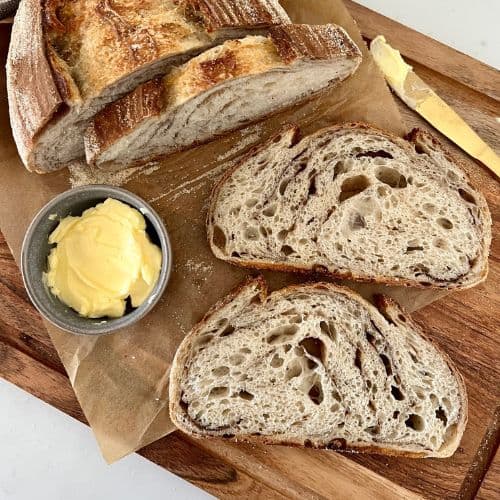
 87 views
87 viewsCinnamon Swirl Sourdough Bread
pantrymama.com
4.4
(61)
45 minutes
Your folders
 134 views
134 viewsSourdough Cinnamon Raisin Swirl Bre...
littlespoonfarm.com
Your folders

 346 views
346 viewsSourdough Cinnamon Raisin Swirl Bre...
breadtopia.com
1 hours
Your folders

 82 views
82 viewsPumpkin Cinnamon Swirl Sourdough Br...
gatherednutrition.com
4.9
(14)
45 minutes
Your folders
 13 views
13 viewsSourdough Cinnamon Raisin Swirl Bre...
littlespoonfarm.com
Your folders
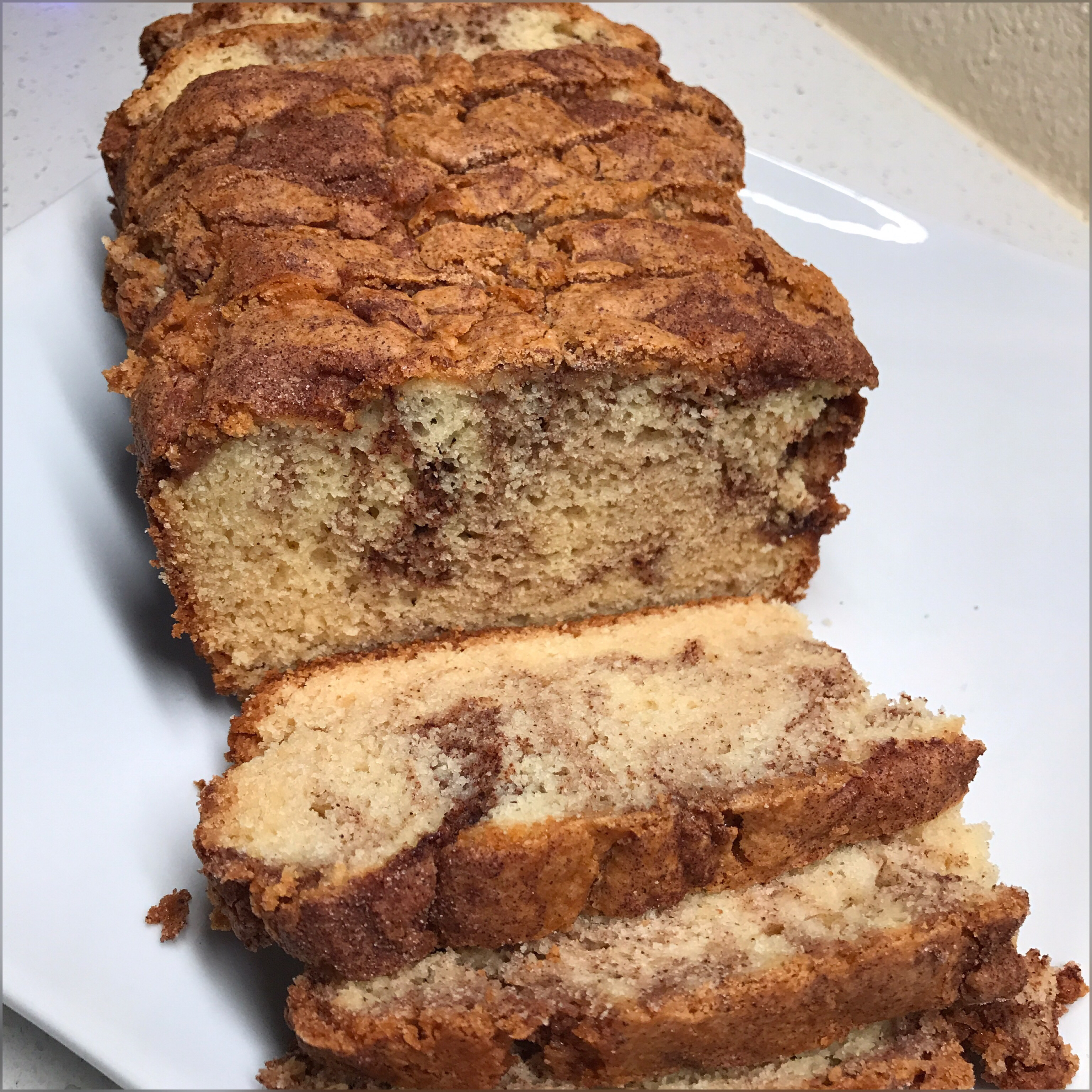
 644 views
644 viewsCinnamon Swirl Bread
allrecipes.com
4.6
(871)
45 minutes
Your folders
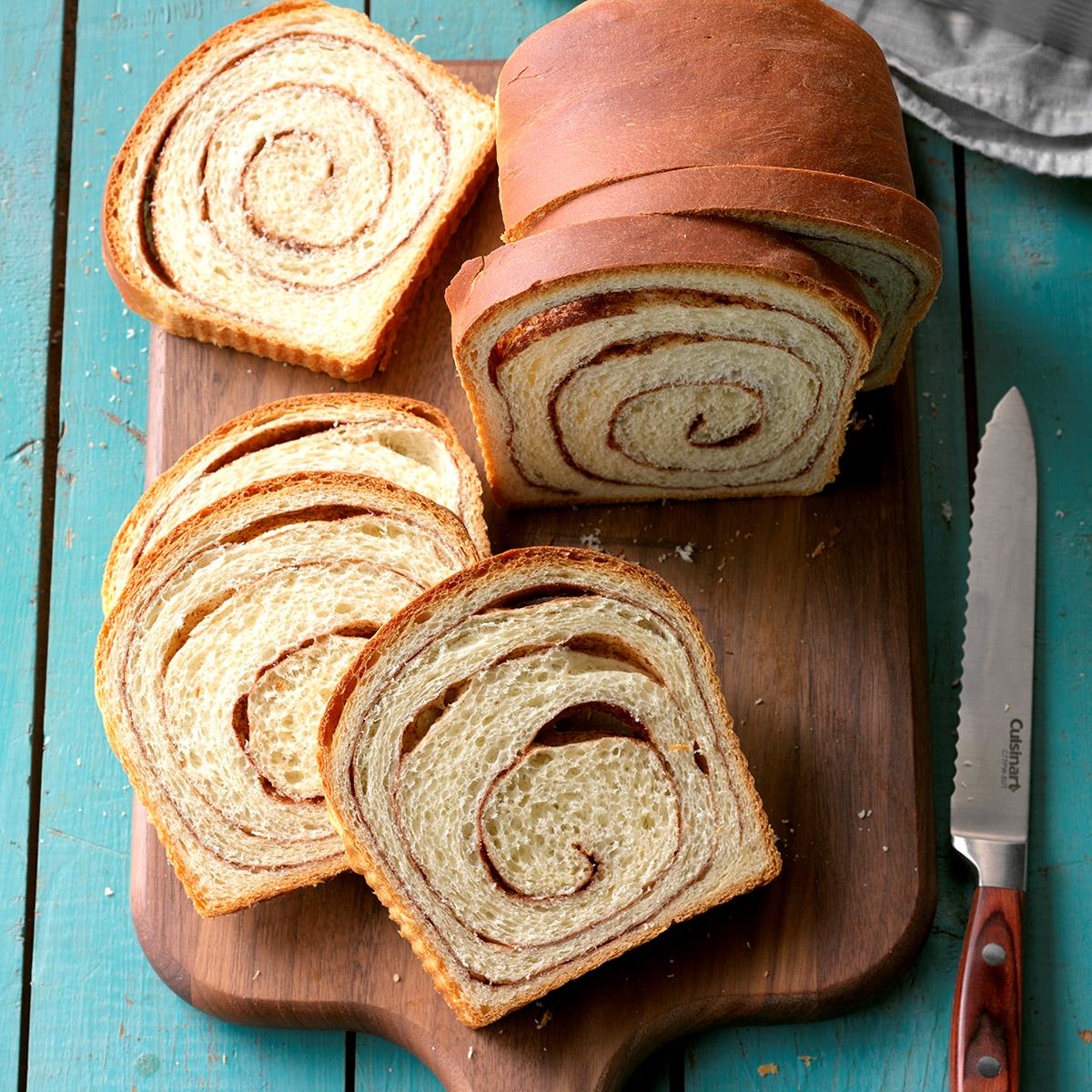
 327 views
327 viewsCinnamon Swirl Bread
tasteofhome.com
4.9
(25)
30 minutes
Your folders
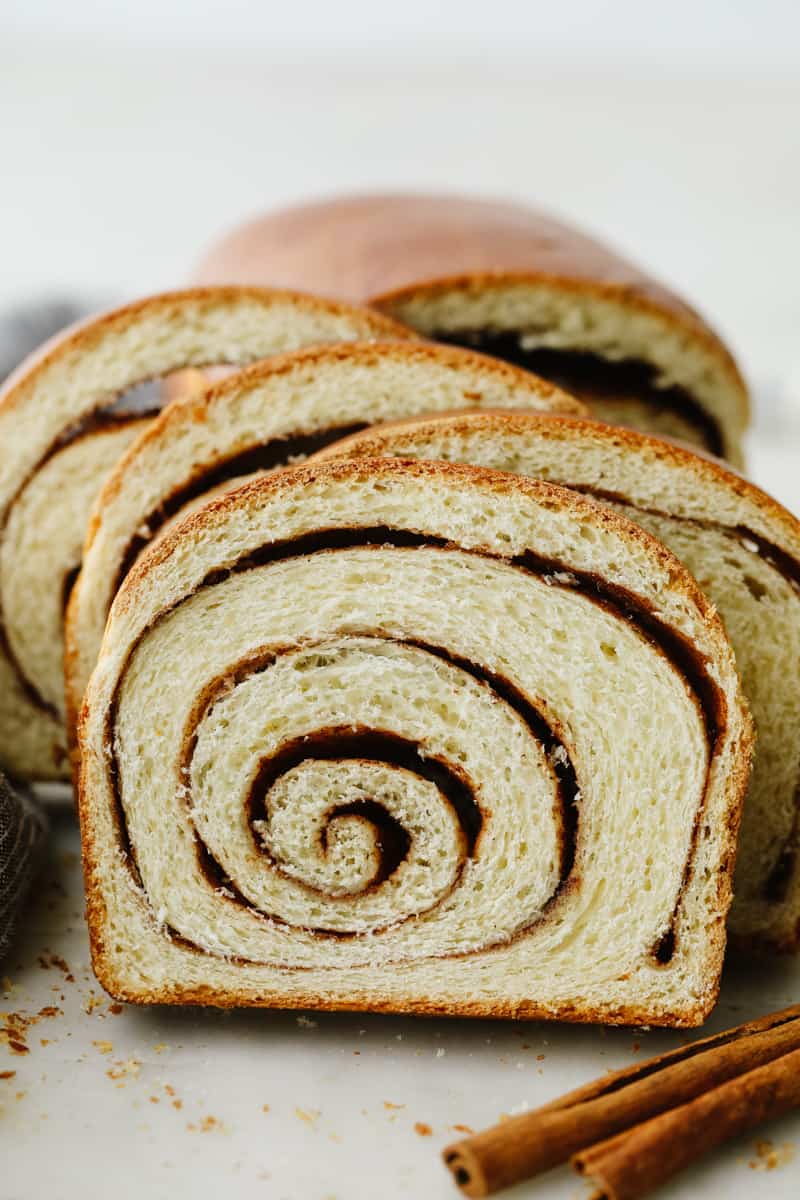
 469 views
469 viewsCinnamon Swirl Bread
therecipecritic.com
35 minutes
Your folders

 427 views
427 viewsCinnamon-Swirl Bread
kingarthurbaking.com
4.7
(69)
50 minutes
Your folders

 300 views
300 viewsCinnamon Swirl Bread
tasteofhome.com
4.9
(26)
30 minutes
Your folders
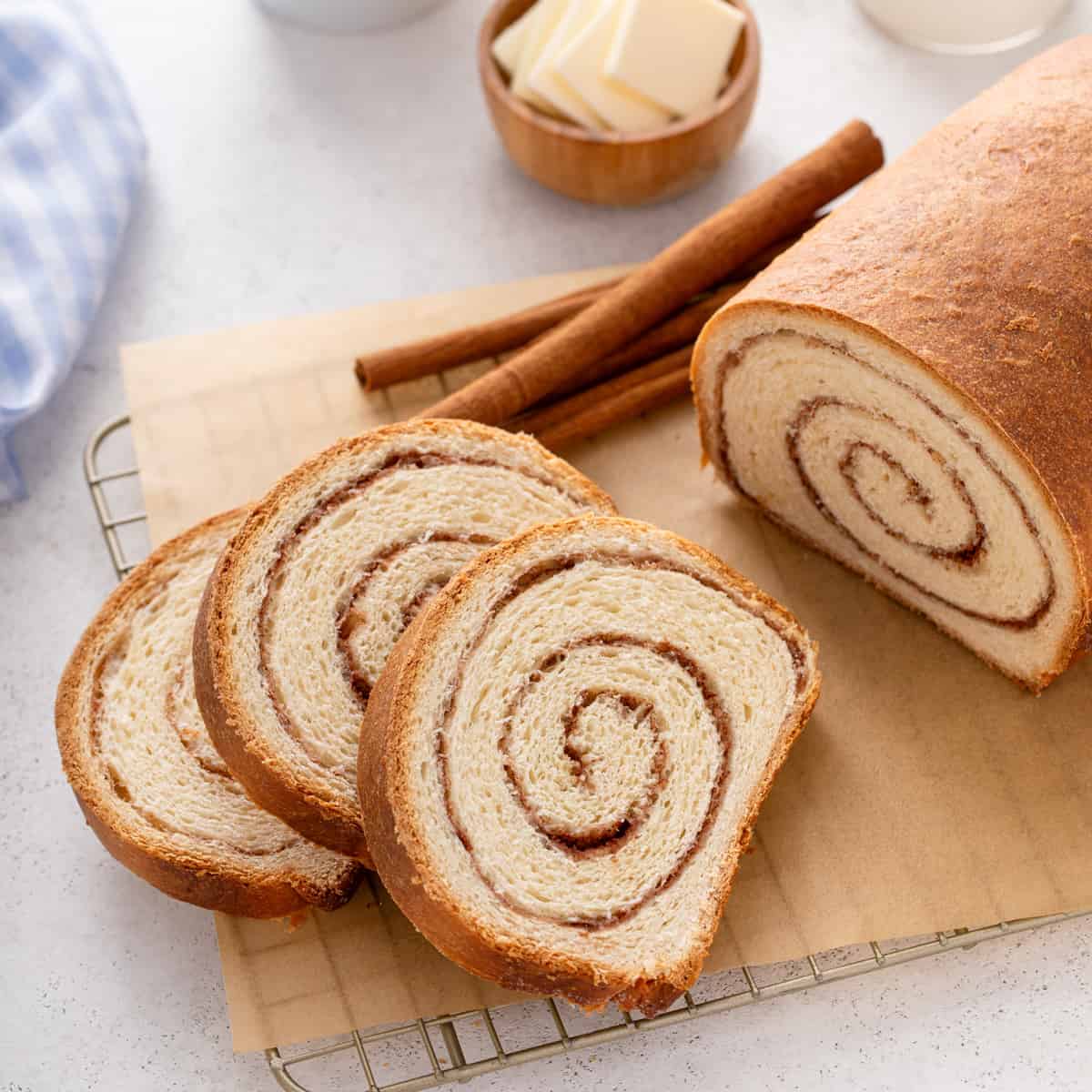
 111 views
111 viewsCinnamon Swirl Bread
mybakingaddiction.com
5.0
(4)
50 minutes
Your folders

 440 views
440 viewsCinnamon Swirl Quick Bread
sallysbakingaddiction.com
4.9
(556)
55 minutes
Your folders
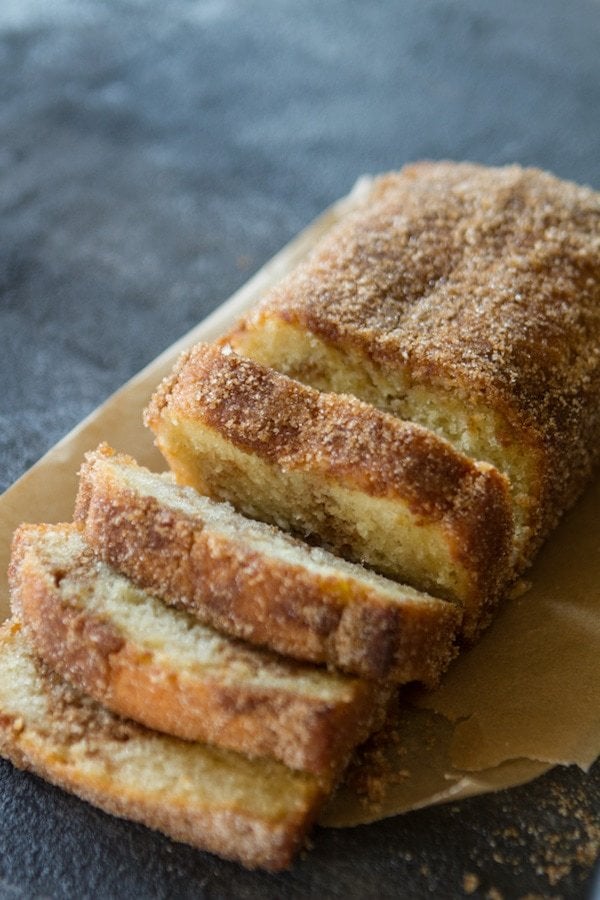
 523 views
523 viewsCinnamon Swirl Donut Bread
laurenslatest.com
5.0
(49)
45 minutes
Your folders
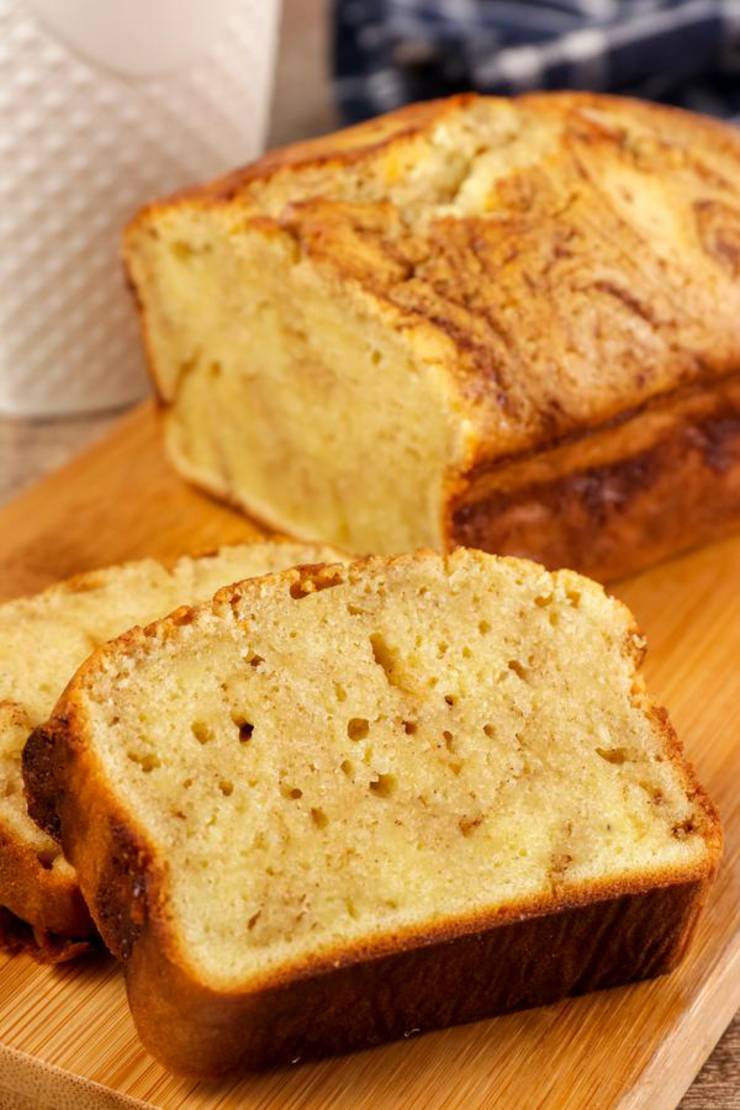
 382 views
382 viewsKeto Cinnamon Swirl Bread
kimspireddiy.com
5.0
(1)
45 minutes
Your folders
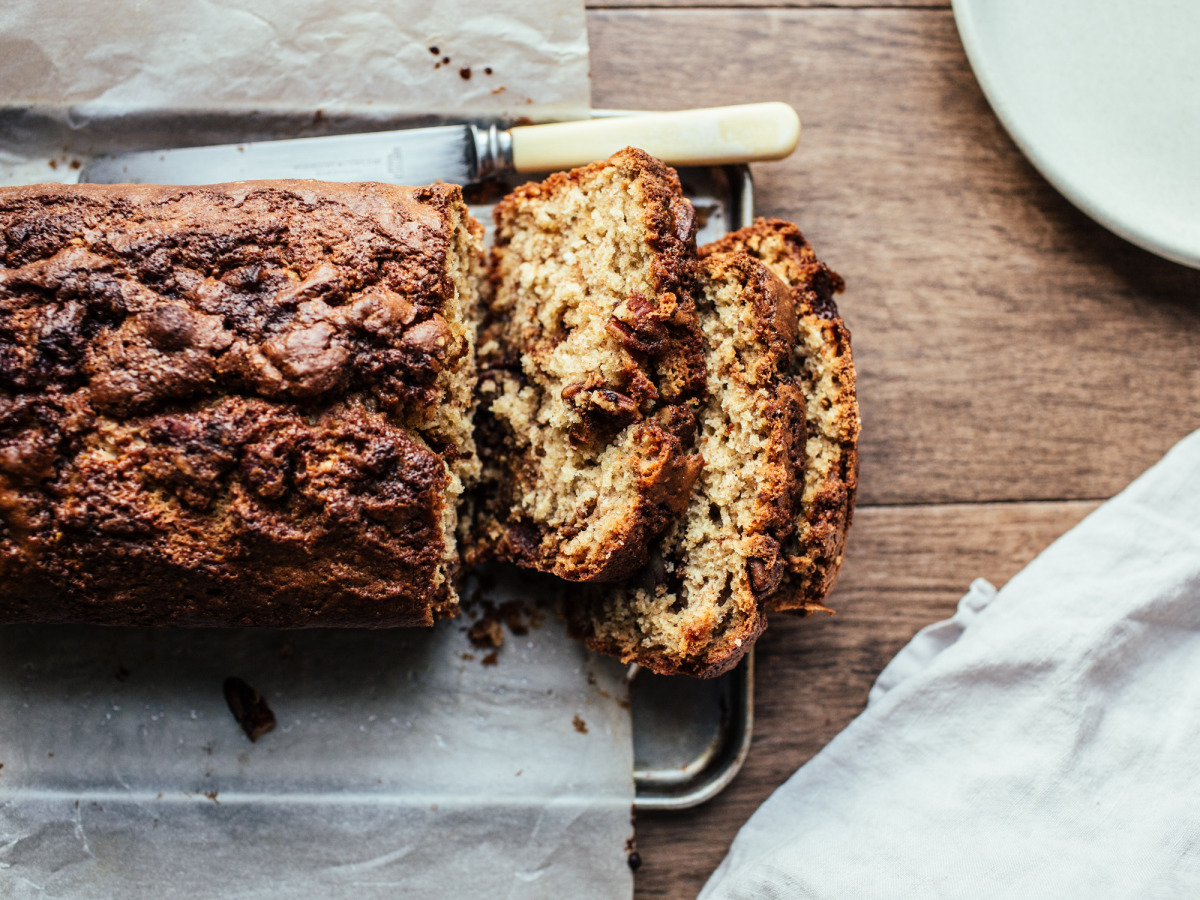
 407 views
407 viewsEggnog Cinnamon Swirl Bread
food.com
5.0
(21)
1 hours, 5 minutes
Your folders
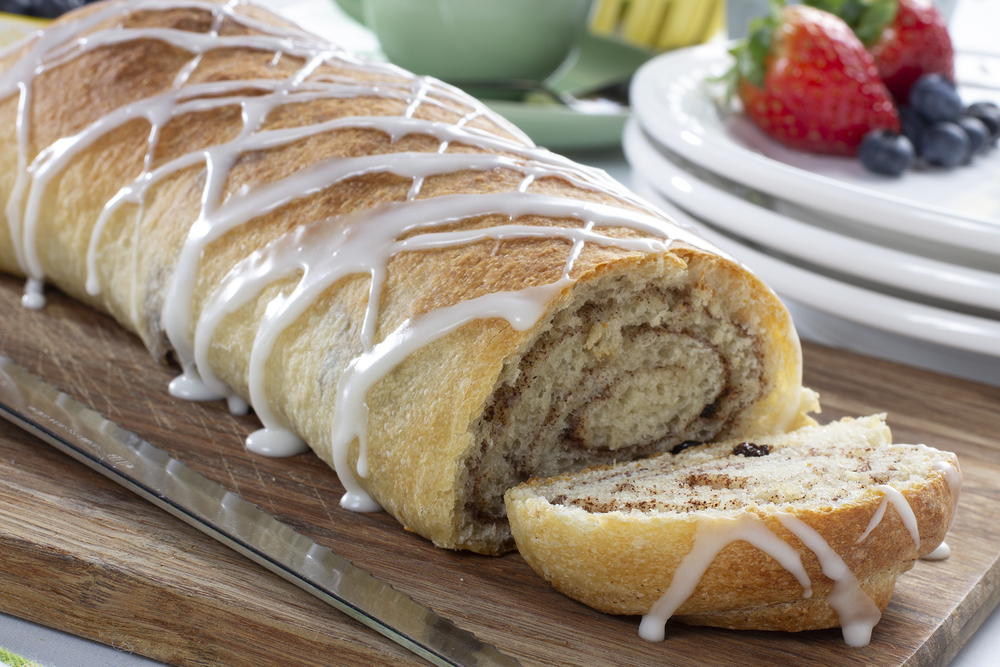
 264 views
264 viewsCinnamon Swirl Raisin Bread
mrfood.com
5.0
(1)
30 minutes
Your folders
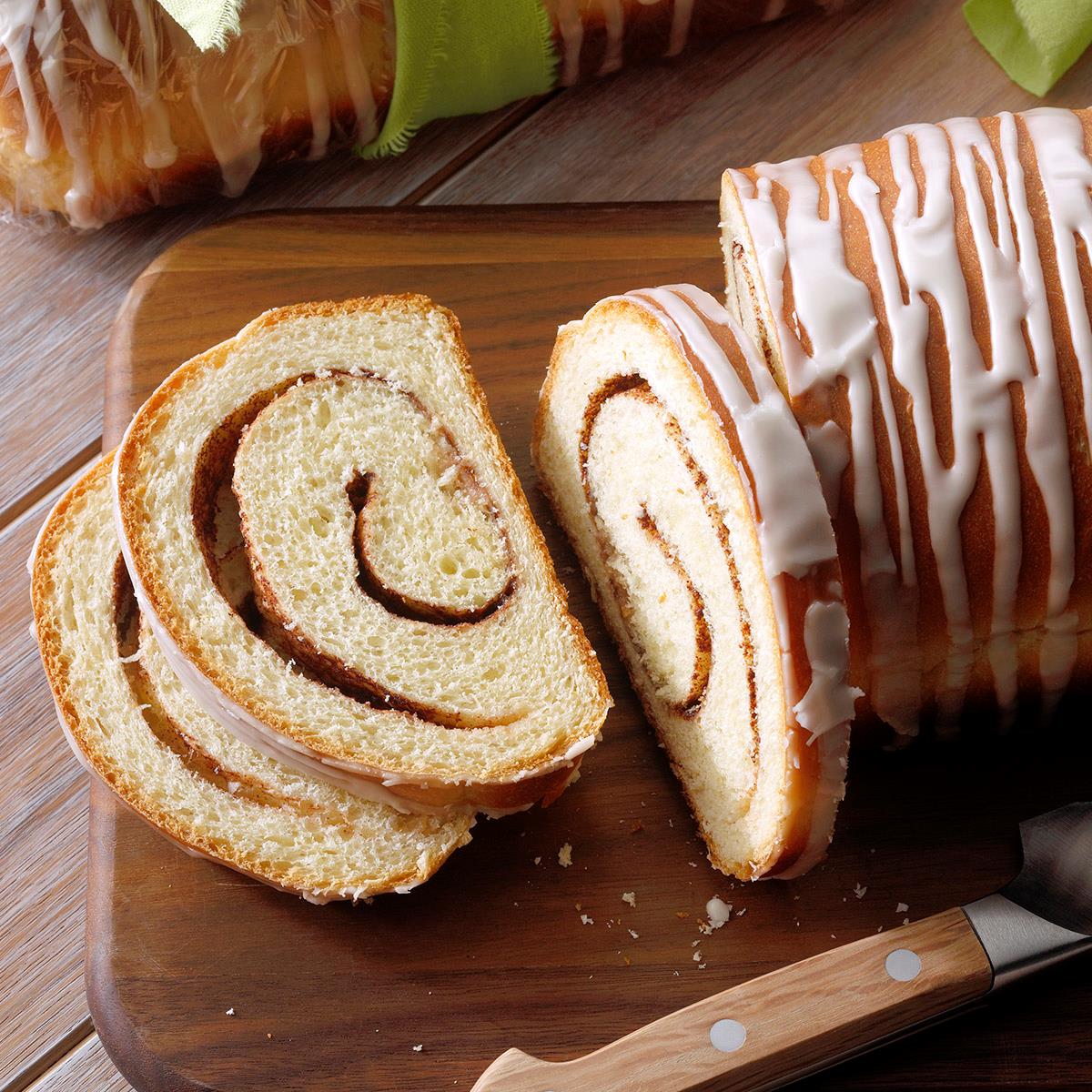
 163 views
163 viewsCinnamon Swirl Breakfast Bread
tasteofhome.com
5.0
(7)
30 minutes
Your folders
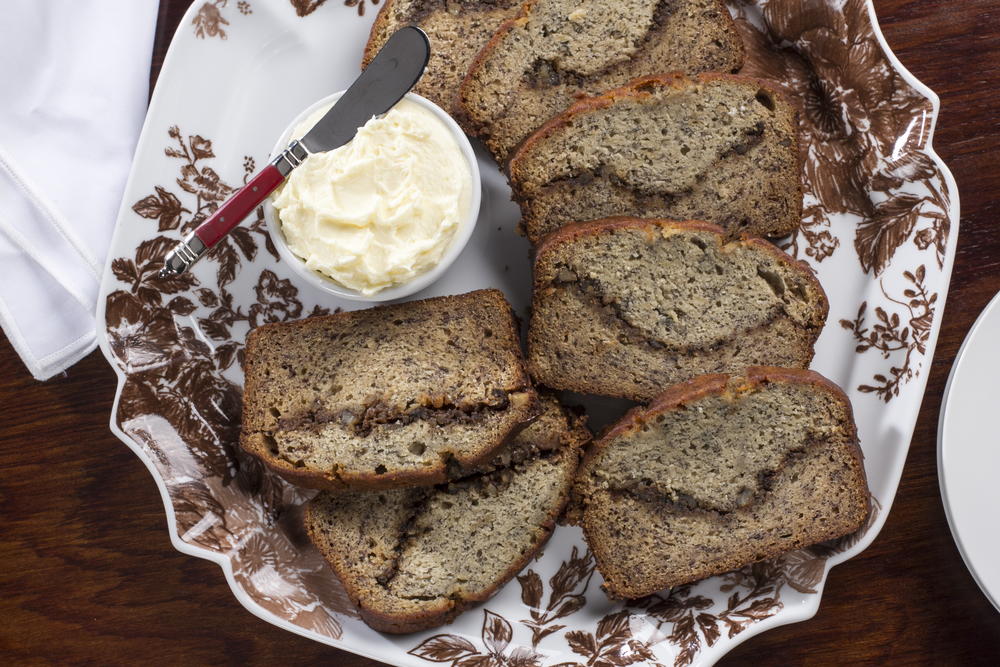
 286 views
286 viewsCinnamon Swirl Banana Bread
mrfood.com
1 hours
Your folders

 372 views
372 viewsCinnamon Swirl Quick Bread
sallysbakingaddiction.com
4.9
(559)
55 minutes